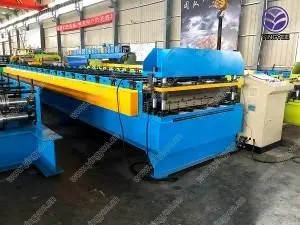
The Revolution of PU Sandwich Panel Machine in Modern Construction
In recent years, the construction industry has seen a significant shift towards more efficient, sustainable, and innovative building methods. One of the most remarkable advancements contributing to this transformation is the PU sandwich panel machine. This technology not only enhances the efficiency of construction processes but also ensures better thermal insulation and overall structural integrity.
What is a PU Sandwich Panel?
A PU (polyurethane) sandwich panel consists of a core layer made from polyurethane foam sandwiched between two outer layers of metal, usually steel. This combination offers excellent thermal insulation, fire resistance, and soundproofing capabilities. The use of PU foam also ensures that these panels are lightweight yet strong, making them an ideal choice for various applications, including industrial buildings, commercial structures, and even residential homes.
The Role of the PU Sandwich Panel Machine
The PU sandwich panel machine automates the manufacturing process of these panels, leading to increased productivity and reduced labor costs. This machine is designed to efficiently produce high-quality panels at a rapid pace, catering to the growing demand in the construction industry.
The process begins with the metal sheets being fed into the machine, which subsequently applies a layer of polyurethane foam between the two metal sheets. The integration of advanced technology ensures uniform thickness and density of the foam, which is crucial for the overall performance of the panels. Once formed, the panels can be cut to various dimensions based on the specific requirements of construction projects.
Advantages of Using PU Sandwich Panels

1. Thermal Insulation One of the key benefits of PU sandwich panels is their superior thermal insulation properties. This feature reduces the energy costs associated with heating and cooling buildings, contributing to a more sustainable environment.
2. Speed of Construction The prefabrication of sandwich panels allows for faster construction times. Builders can quickly install these panels, leading to shorter project timelines and decreased labor costs.
3. Lightweight yet Durable The combination of lightweight materials with the strength of metal contributes to the overall durability of the panels. Their lighter weight also minimizes the load on building foundations.
4. Versatile Applications PU sandwich panels are incredibly versatile and can be used in a variety of settings, from warehouses and factories to residential homes and cold storage facilities. Their adaptability makes them a preferred choice among architects and builders.
5. Cost-Effectiveness The long-term benefits of energy savings, combined with reduced labor and quicker construction times, make PU sandwich panels a cost-effective solution for modern building projects.
The Future of PU Sandwich Panel Machines
As the demand for sustainable construction solutions continues to grow, the significance of PU sandwich panel machines is expected to rise. Innovations in technology will likely lead to even more efficient production processes and improved panel quality. Companies are focusing on enhancing machine automation, integrating innovative control systems, and adopting eco-friendly practices in the manufacturing process.
In conclusion, the PU sandwich panel machine represents a significant evolution in construction technology, providing a combination of efficiency, sustainability, and versatility. As the industry moves towards greener practices and quicker construction methodologies, the role of this machine will undoubtedly become more pivotal, shaping the future of building design and construction. Embracing these advancements will lead to better buildings that meet the challenges of tomorrow’s infrastructure needs.